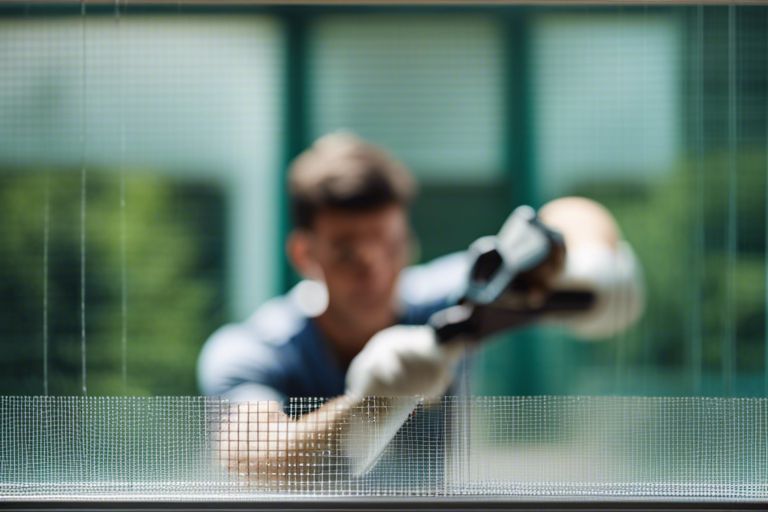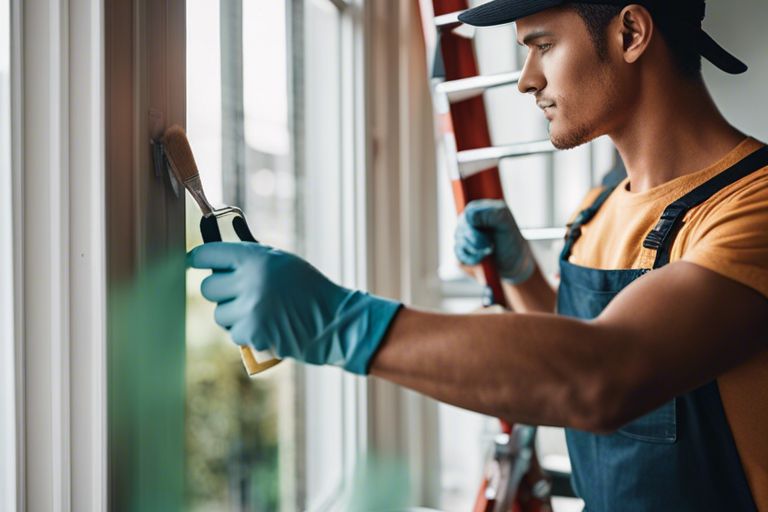Embracing the use of aluminium for your windows and doors may seem like a stylish and modern choice, but have you ever considered the environmental impact of this decision? The production of aluminium has a significant carbon footprint, with large amounts of energy required during the extraction and manufacturing processes. Additionally, the mining of bauxite ore for aluminium production can lead to deforestation and habitat destruction. However, once your aluminium windows and doors are installed, they offer excellent durability and can contribute to improved energy efficiency in your home. As a conscious consumer, understanding the full environmental impact of your choices is crucial for making informed decisions. In this guide, we will delve deeper into the environmental implications of using aluminium for windows and doors, equipping you with the knowledge to make more sustainable choices for your home.
Key Takeaways:
- Aluminium is a highly sustainable material that can be recycled repeatedly without losing its properties, making it an environmentally friendly option for windows and doors.
- The production of aluminium can have a significant impact on the environment, as it requires a large amount of energy and produces greenhouse gas emissions.
- Aluminium windows and doors are highly durable and long-lasting, reducing the need for frequent replacements and minimizing the environmental impact of production and disposal.
- The use of thermally broken aluminium frames can improve the energy efficiency of windows and doors, reducing the overall environmental impact of a building.
- Choosing aluminium products with high thermal performance and low U-values can further reduce energy consumption and minimize the environmental footprint of a building.
- Aluminium can be coated or finished using environmentally friendly processes, reducing the environmental impact of surface treatments and enhancing the material’s sustainability.
- Proper disposal and recycling of aluminium windows and doors at the end of their lifecycle can further minimize the environmental impact and contribute to a circular economy.
Types of Aluminium Used in Windows and Doors
Assuming you are considering aluminium windows and doors for your home, it is important to understand the different types of aluminium used in their manufacturing. The choice of aluminium can have a significant impact on the environmental sustainability of your project. The table below outlines the main types of aluminium used, their characteristics, and their environmental impact.
| Type of Aluminium | Characteristics |
|---|---|
| Primary Aluminium | |
| Recycled Aluminium | |
| Aluminium Alloys |
Primary Aluminium
When it comes to primary aluminium, it is produced directly from bauxite ore through the Bayer process, which involves the extraction of alumina through a chemical process. This method of extraction requires a significant amount of energy and has a high environmental impact. The extraction of primary aluminium also contributes to deforestation and habitat destruction. The production of primary aluminium releases a large amount of greenhouse gases into the atmosphere, making it a less sustainable option for windows and doors.
Recycled Aluminium
If you choose to use recycled aluminium for your windows and doors, you are making a more environmentally friendly choice. Recycled aluminium requires significantly less energy to produce compared to primary aluminium, and it helps in reducing the amount of waste sent to landfills. By using recycled aluminium, you are also contributing to the conservation of natural resources and reducing the carbon footprint of your project.
Aluminium Alloys
Aluminium alloys are a combination of aluminium with other metals, such as copper, magnesium, or zinc, to enhance their properties. The use of aluminium alloys in windows and doors can improve their strength, durability, and corrosion resistance. A well-chosen aluminium alloy can increase the lifespan of your windows and doors, reducing the need for replacement and ultimately reducing environmental impact.
Factors Affecting Environmental Impact
Unlike other materials used for windows and doors, aluminium has several factors that affect its environmental impact. These factors include:
- The recyclability of aluminium
- The energy-intensive extraction and production processes
- The transportation and installation impact
Recognizing these factors is crucial in understanding the overall environmental impact of using aluminium for windows and doors. To learn more about whether aluminium is eco-friendly, you can explore a related article here.
Extraction and Production
The extraction and production of aluminium play a significant role in its environmental impact. The extraction process involves mining bauxite ore and refining it into alumina, which requires a substantial amount of energy. The production of aluminium from alumina also consumes a large amount of energy and emits greenhouse gases. Additionally, the use of chemical additives and electrolysis in the production process can have negative environmental impacts.
Transportation and Installation
The transportation and installation of aluminium windows and doors also contribute to their environmental impact. The transportation of aluminium from production facilities to construction sites involves the consumption of fossil fuels and the emission of greenhouse gases. Additionally, the installation process may require the use of heavy machinery and equipment, further contributing to the overall environmental impact.
Step-by-Step: Aluminium Life Cycle Analysis
Your understanding of the environmental impact of using aluminium for windows and doors begins with a comprehensive life cycle analysis of this material. If you want to delve deeper into the topic, you can find more detailed information on Aluminium and its environmental impact.
Mining and Processing
During the mining and processing of aluminium, the extraction of bauxite ore and the refining of alumina result in significant environmental impacts. The process involves a high energy consumption and releases greenhouse gases, which contribute to climate change. However, advancements in technology have led to improvements in energy efficiency and reduced emissions during the extraction and processing of aluminium.
Fabrication of Windows and Doors
When it comes to the fabrication of aluminium windows and doors, the forging, cutting, and assembling of the material require energy and produce waste. However, aluminium’s lightweight nature, durability, and resistance to corrosion contribute to the longevity of the products, resulting in a lower environmental impact over their lifespan compared to other materials.
Usage and Thermal Efficiency
Aluminium’s thermal conductivity has been a point of concern in terms of energy efficiency. However, through the use of thermal breaks and other innovative technologies, manufacturers have been able to enhance the thermal performance of aluminium windows and doors, leading to effective insulation and reduced energy consumption in buildings.
End-of-Life Recycling
At the end of its life cycle, aluminium can be recycled indefinitely without losing its quality. This endless recyclability reduces the need for primary production and minimizes the environmental impact of aluminium use in windows and doors.
Tips for Reducing Environmental Impact
Now that you understand the environmental impact of using aluminium for windows and doors, you may be wondering what you can do to minimize the damage. Here are some tips for reducing the environmental impact of your windows and doors:
- Choose recycled aluminium: Using recycled aluminium for your windows and doors can significantly reduce the amount of energy and resources needed for production.
- Invest in energy-efficient windows and doors: Look for products that are designed to minimize heat loss and reduce the need for heating and cooling, which can lower your energy consumption and carbon footprint.
- Proper maintenance: Regular maintenance of your windows and doors can help extend their lifespan, reducing the need for replacements and minimizing waste.
- Support sustainable suppliers: By choosing suppliers that prioritize sustainability in their production processes, you can contribute to environmental conservation efforts.
This approach can help you make a positive impact on the environment by reducing the carbon footprint associated with your aluminium windows and doors.
Choosing Sustainable Suppliers
When choosing suppliers for your aluminium windows and doors, consider those that prioritize sustainability in their operations. Look for suppliers who use recycled materials and implement practices to minimize waste and reduce energy consumption. By supporting these sustainable suppliers, you are not only reducing the environmental impact of your windows and doors but also contributing to the demand for eco-friendly products in the market.
Maintenance and Energy Efficiency Practices
Proper maintenance of your aluminium windows and doors is crucial for their longevity and performance. Regularly inspect and clean the frames, seals, and hardware to prevent air leaks and minimize energy loss. Additionally, consider investing in energy-efficient windows and doors that are designed to reduce heat transfer, which can lower your energy consumption and carbon emissions.
Pros and Cons of Aluminium Windows and Doors
Despite the many benefits of using aluminium for windows and doors, there are also some drawbacks to consider. It’s important to weigh both the pros and cons before making a decision for your home or building project.
| Pros | Cons |
| Durable and long-lasting | Not as energy-efficient as other materials |
| Low maintenance | Can be more expensive than other materials |
| Sleek and modern appearance | Can conduct heat if not properly insulated |
| Resistant to corrosion | May not be suitable for extreme climates |
| Recyclable and environmentally friendly | Potential for condensation |
Advantages of Aluminium Frames
When it comes to the advantages of using aluminium frames for windows and doors, there are several key benefits to consider. Aluminium is known for being durable and long-lasting, which means that once installed, you won’t have to worry about frequent repairs or replacements. Additionally, aluminium frames are low maintenance and can withstand harsh weather conditions without deteriorating. Their sleek and modern appearance also adds a touch of sophistication to any building, making them a popular choice for both residential and commercial properties.
Environmental Drawbacks
Despite its many advantages, aluminium does have some environmental drawbacks. While aluminium is recyclable, the process of extracting and manufacturing it can be energy-intensive. Additionally, aluminium windows and doors may not be as energy-efficient as other materials, which can lead to higher heating and cooling costs. It’s important to consider these factors when weighing the environmental impact of using aluminium for windows and doors.

The environmental impact of using aluminium for windows and doors
Drawing together all the information presented, it’s clear that the environmental impact of using aluminium for windows and doors is significant. While aluminium is a durable and low-maintenance material, its production and recycling processes consume a large amount of energy and produce a considerable amount of greenhouse gas emissions. Additionally, the extraction of aluminium ore can lead to habitat destruction and negative impacts on local ecosystems. As a consumer, it’s important to weigh the benefits of aluminium against its environmental costs and consider alternative materials such as wood or fiberglass that may have a lower impact on the environment.
FAQ
Q: What is the environmental impact of using aluminium for windows and doors?
A: Aluminium production requires a significant amount of energy, contributing to greenhouse gas emissions. However, aluminium is highly recyclable and has a long lifespan, making it a sustainable choice for windows and doors.
Q: How does the production of aluminium impact the environment?
A: The production of aluminium releases greenhouse gases and involves mining and refining processes that can impact local ecosystems. However, advancements in technology have reduced the environmental impact of aluminium production in recent years.
Q: Is aluminium a sustainable material for windows and doors?
A: Yes, aluminium is considered a sustainable material for windows and doors due to its recyclability and durability. It can be recycled repeatedly without losing its quality, and its long lifespan reduces the need for frequent replacements.
Q: What are the benefits of using aluminium for windows and doors?
A: Aluminium windows and doors are durable, low-maintenance, and provide excellent thermal and sound insulation. They also offer a modern and sleek aesthetic, making them a popular choice for both residential and commercial buildings.
Q: How can the environmental impact of using aluminium for windows and doors be minimized?
A: The environmental impact of using aluminium for windows and doors can be minimized through efficient use of energy during production, promoting recycling initiatives, and opting for products made from recycled aluminium.
Q: Are there any sustainable certifications for aluminium windows and doors?
A: Yes, there are various sustainable certifications for aluminium products, such as LEED (Leadership in Energy and Environmental Design) and BREEAM (Building Research Establishment Environmental Assessment Method), which recognize environmentally responsible building materials.
Q: What should consumers consider when choosing aluminium windows and doors?
A: Consumers should consider the energy efficiency, recycled content, and certifications of aluminium windows and doors. They should also opt for products from manufacturers committed to sustainable practices and transparent supply chains.






